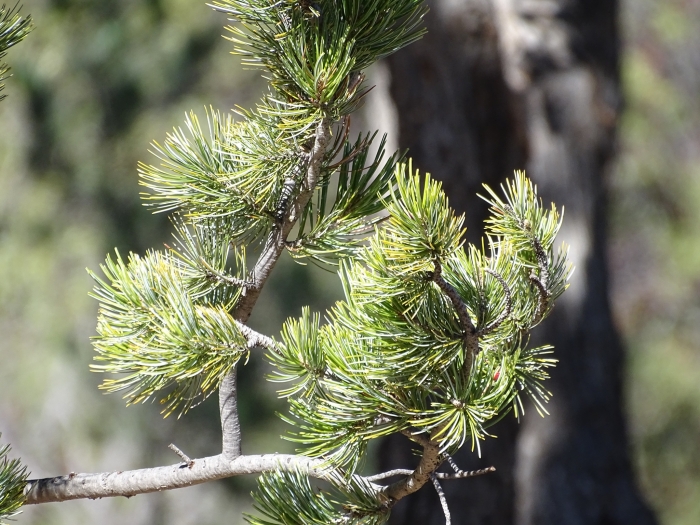Mexican Nut Pine
(Pinus cembroides)
Mexican Nut Pine (Pinus cembroides)
/
/

CK Kelly
CC BY 4.0

















































Estimated Native Range
Summary
Mexican Nut Pine is valued for its drought tolerance and ability to thrive in poor soils, making it suitable for xeriscaping and as an ornamental tree in arid landscapes. It is also used for reforestation in its native range due to its adaptability. The tree’s compact size makes it a good choice for smaller gardens, and it can be grown as a bonsai. It requires full sun exposure and well-drained soils, preferably sandy or rocky, with low to moderate water once established. While generally disease-resistant, it can be susceptible to pine beetles and scale insects.CC BY-SA 4.0
Plant Description
- Plant Type: Tree
- Height: 20-50 feet
- Width: 15-20 feet
- Growth Rate: Slow
- Flower Color: N/A
- Flowering Season: Non-Flowering
- Leaf Retention: Evergreen
Growth Requirements
- Sun: Full Sun
- Water: Low
- Drainage: Medium, Fast
Common Uses
Bird Garden, Deer Resistant, Drought Tolerant, Edible*Disclaimer: Easyscape's listed plant edibility is for informational use. Always verify the safety and proper identification of any plant before consumption., Fragrant, Low Maintenance, Rabbit Resistant, Street Planting
Natural Habitat
Native to arid and semi-arid regions including open woodlands, scrubby areas, and rocky hillsides in Mexico and the Southwestern United States
Other Names
Common Names: Mexican Pinyon, Pinyon Pine, Nut Pine, Stone Pine, Mexican Stone Pine, Nuß-Kiefer, Mexikanische Nußkiefer, Pinon, Pino Piñonero, Pino Prieto
Scientific Names: , Pinus cembroides, Pinus johannis, Pinus cembroides var. cembroides,
GBIF Accepted Name: Pinus cembroides Zucc.